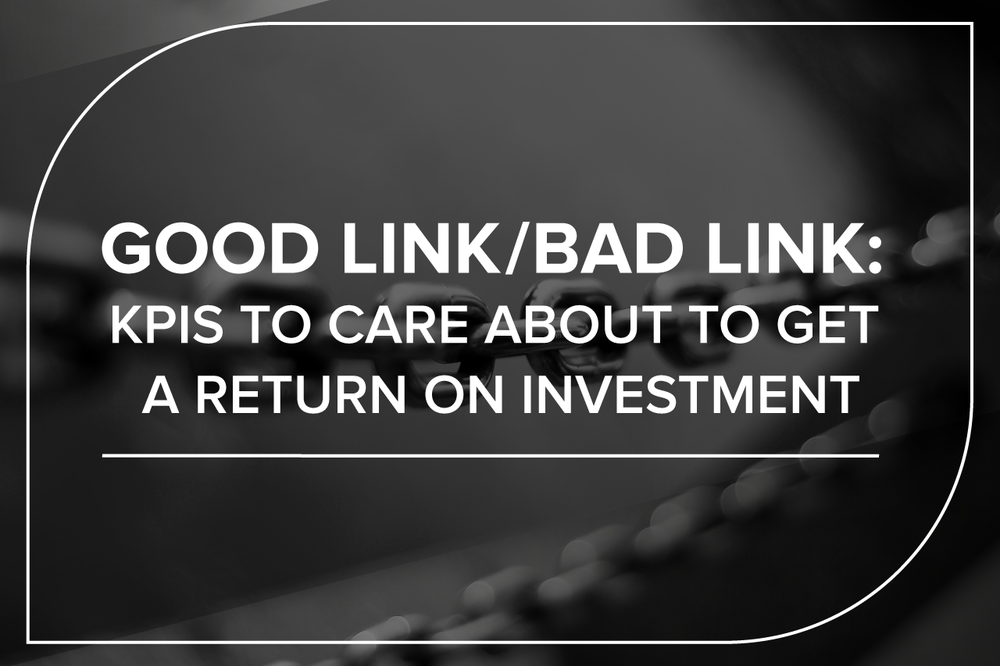The Biggest Pop Culture Moments of 2023
News

22 / 03 / 21
Why are we doing digital PR and outreach? What is the purpose of link building? Some in the industry would say that they do it for SEO, for link juice or to achieve a higher DA figure or increase the number of referring domains. Whilst metrics such as DA, DR or TF and the number of referring domains are a good indication, they are not all that matters. The big misunderstanding often lies in a confusion over what the goal really is. The end goal of any digital PR campaign are not the links, it is an increase in sales for your business.
What KPIs should you set for outreach and how do you measure ROI?
When you do SEO for your website, what you want is an increase in rankings in the search engines and more visitors. You want your business to be seen on the internet. When doing digital PR for SEO, the goal should be the same. You want to improve ranking positions for highly relevant keywords and as a result an increased number of visitors, hence organic traffic.
The caveat though is that better rankings and higher numbers of visitors are difficult to attribute to digital PR only. Any other SEO related activity on your website could have contributed to the improvements too. What can be said with certainty is that your number should be going up over time. If they are not, you might not be doing the right things for SEO and digital PR and should dig a bit deeper into what is working for your business and what is not.
This is how steady growth looks like (screenshot taken from Ahrefs.com):
There is another traffic figure that you should be looking at and this one can directly by attributed to your digital PR efforts: Referral traffic. Those are the visitors that come to your site by clicking on a backlink. You can get those numbers in Google Analytics:
The second row in the above table shows the referral traffic your website got within the specified time period. You could drill down further and see the traffic from each backlink individually. This will help you identify which links bring visitors to your site.
The above screenshot shows some more metrics that you should be looking at when evaluating the value of a backlink: bounce rate and session duration. Those figures are a strong indicator of the relevance of a link. If a user clicks on a link, gets to your site but immediately clicks back, the content was not relevant to them. Relevance also matters to Google and has an impact on the value of a backlink for SEO. When researching websites to outreach to, keep the topic and the target audience in mind to determine how relevant a link from that site would be.
When reporting on digital PR results you probably already include the domain name and the respective DA, DR or TF. Maybe add the following KPIs: referral traffic for each link, time referral visitors spent on your site, how many pages they visit and the bounce rate. With correct goal setups in Google Analytics according to your attribution model, you could also add conversion figures.
This brings us back to the original question: What are you doing it for? SEO and digital PR should not only result in better rankings and more traffic to your site. For a lasting impact, you want to increase sales. This means you should track conversions and attribute those accordingly to each of your marketing efforts.
What counts as a conversion depends on your business model and business goals. It can be a newsletter signup, a price enquiry, or a purchase amongst many others. If you can, include those numbers in your link building reports – for each link individually and for your overall organic traffic.
There is one other KPI that often is forgotten because all we seem to care about are links, links, links. If we look back at what traditional PR aims to achieve, it seems almost obvious that we should also account for it in digital PR. That is brand awareness.
It is another goal that is difficult to measure in numbers, but there are a few indicators for increased brand awareness that you can measure: unlinked mentions of your brand, social media signs and branded searches in Google.
We have now seen a mix of link building KPIs. Some of them are easily measurable, others are harder to put into numbers. What you can put into numbers though is the cost of your digital PR efforts – no matter if you are doing it in-house or with the help an agency like JBH. You always can tell exactly how much time the team has spent on a campaign from ideation through creation and outreach to the final reporting. Those hours come with a price and the day will come where the main stakeholders in your business ask for the ROI.
The formula seems straightforward: (PR Revenue – Cost of digital PR)/Cost of digital PR.
The cost of digital PR only depends on a quick look into your books. The PR Revenue however requires some thought. You should include the conversions from organic traffic and the referral traffic, but also a certain percentage of social and direct traffic could be attributed to digital PR. All you have to do is decide on an attribution model for your overall business reporting.